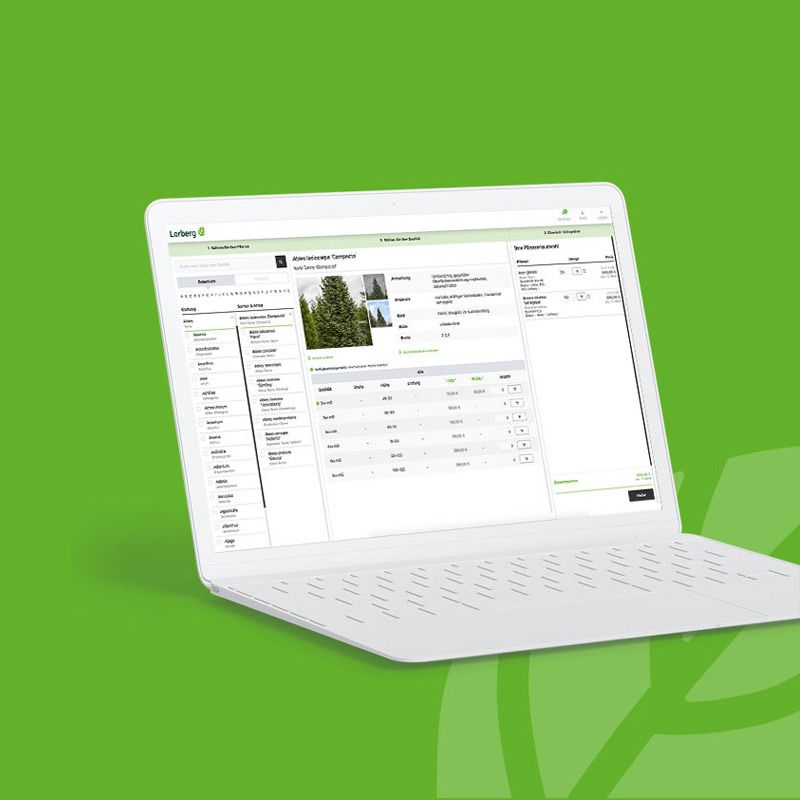
suptitle
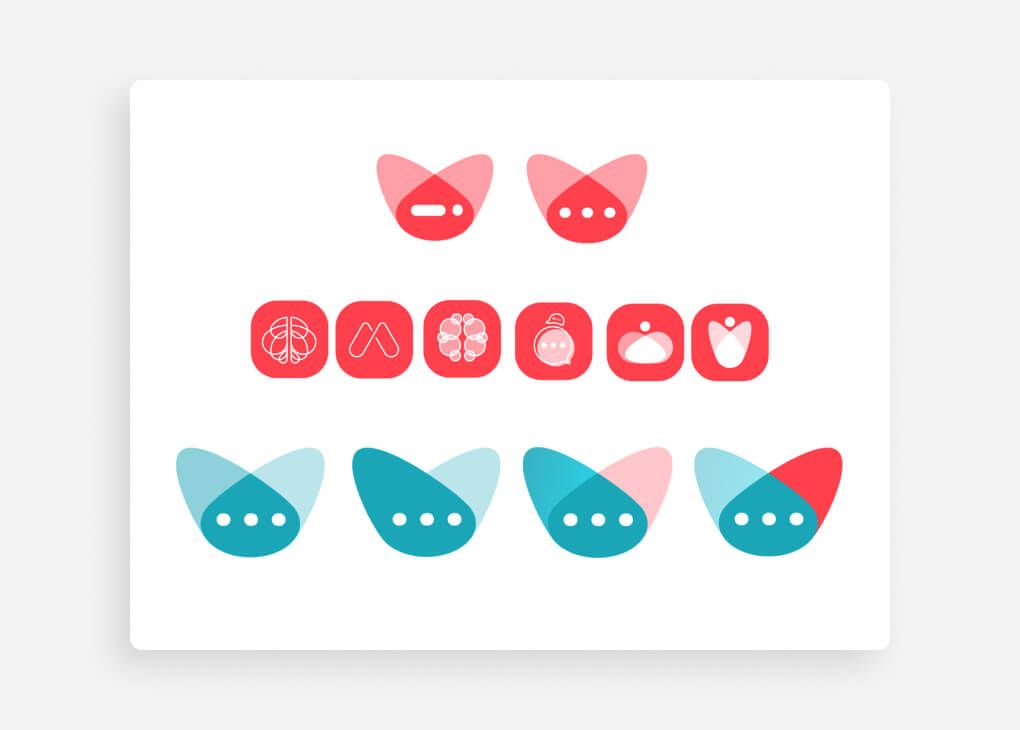
The emergence of the visual identity
Iteratively, the new logo and color scheme were developed. The main application of the logo is digital (mobile app), accordingly we focused on an icon format during the development.
The final branding
We created an icon-based logo that invites you to chat and radiates a positive feeling. The combination of the two main colors turquoise and red looks fresh and modern. A research showed that many well-known chatbots have short, female names. ~~So we looked for a female name that is short, concise as well as international. The result is: Mina.
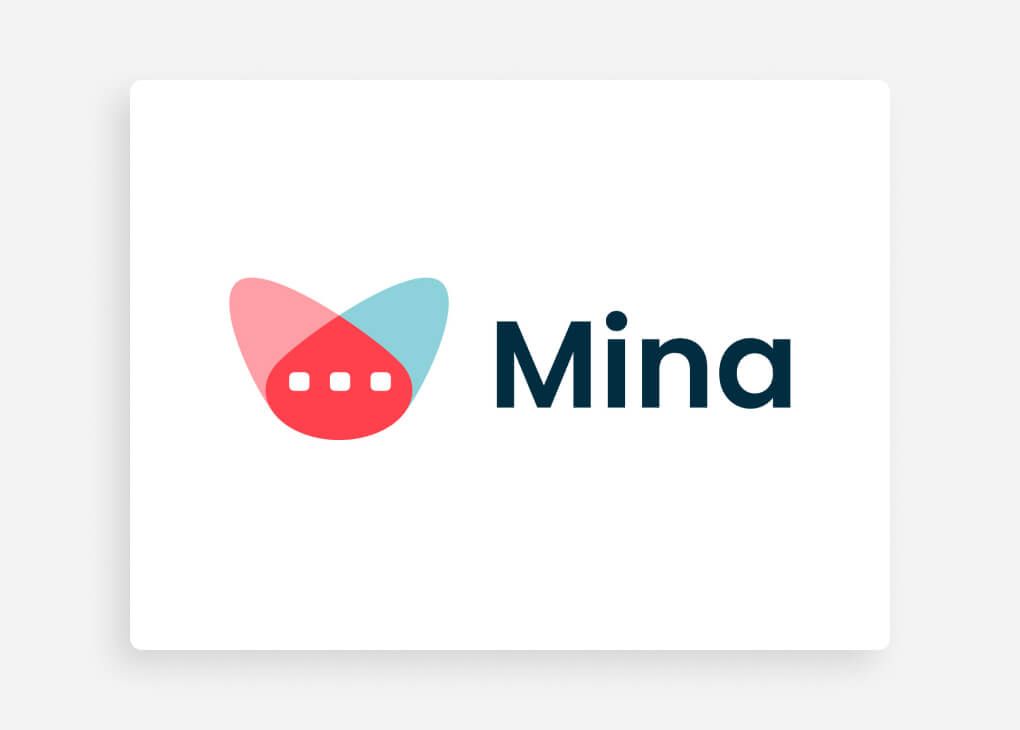
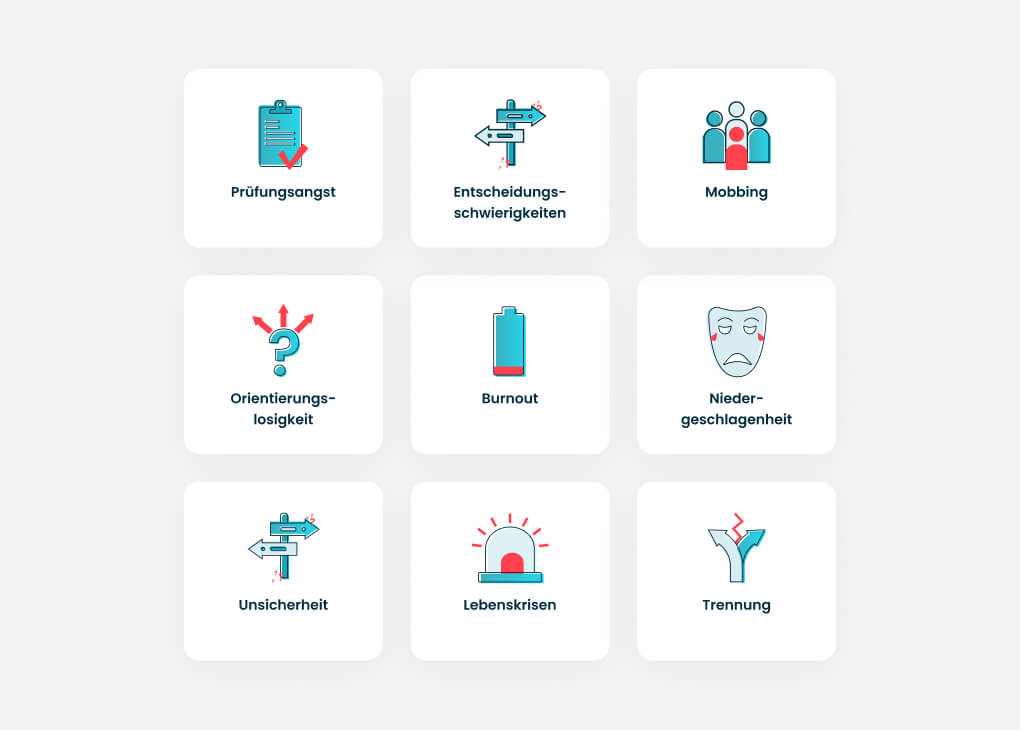
Therapy fields
In Mina there will be 16 different therapy fields, for each field we have developed an individual icon. An excerpt of the application fields:
- Examination anxiety
- decision-making difficulties
- mobbing
- life crises
- burnout
- dejection
- Insecurity
- disorientation
What are the challenges of developing a chatbot?
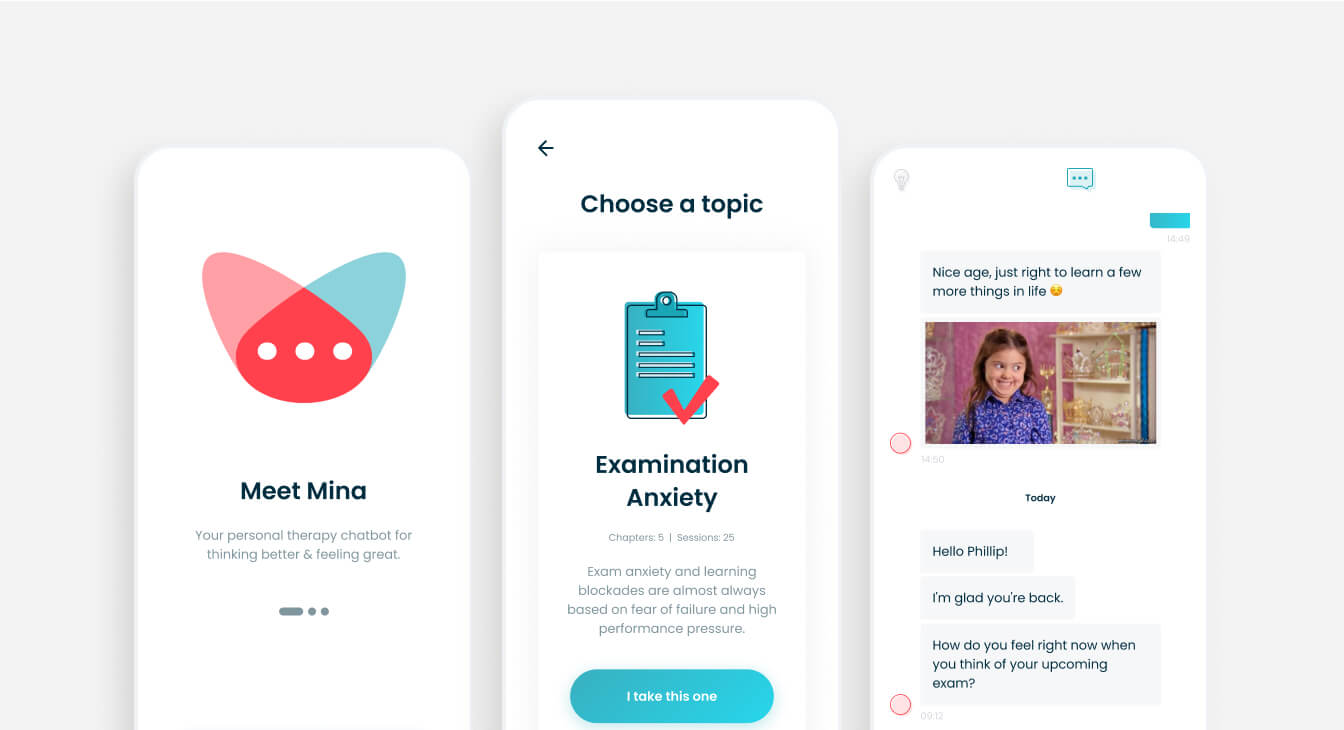
As with any digital product development, there are several key questions at the beginning:
- 1) Does the problem from the thesis posed even exist among users?
- 2) Will the product be able to solve the user problem and if so, how?
- 3) What features might the first MVP version consist of?
- 4) With which means and iterations (build facade to test) do we manage to go into first user testing to validate the thesis (problem solution)?
At the beginning of a digital product development (MVP), costs should be kept as low as possible. It is about fast testing, which in most cases can be done using an interactive prototype. In the case of Mina, we use the No-Code Chatbot Tool from Landbot.io. Using Landbot, we are able to test our conversational experience without writing a line of code by building an initial conversational experience (test dialogs as CX) and sharing it with a small set of users. We can directly process the resulting user feedback to further validate the product idea.
We call the phase before detailed conception and development of the MVP (Minimum Viable Product) facade building or Minimum Loveable Product (MLP). By this we mean the initial elaboration of a product idea for which there is not yet a technical solution. However, on the basis of the facade, very important feedback can already be obtained as to whether the product could achieve Product-Market Fit.
Back to Mina. The technical development of a chatbot app does not pose major challenges. In the case of Mina, we are working with a cross-platform solution based on React Native. The real challenge is to manage the myriad of content (several 100 pages of therapeutic interviewing) in a CMS.
Therefore, a CMS must be found (in-house development can follow), which
a) is capable of covering different use cases,
b) technically flexible (adaptability interface),
c) affordable,
d) and is scalable.
As a quick solution, we wanted to attach the prototyping tool Landbot to the frontend of the chatbot, with this bridge the content would have been further updateable in Landbot and we would not have needed a separate CMS. However, it quickly became apparent that Landbot's API is not flexible enough. Why?
Which CMS did we choose?
In the end, we found the open source AI chatbot platform botpress.io and use it as our content management system. The drag & drop interface of botpress is a bit more technical than Landbot's, but the whole system and especially the API is more flexible.
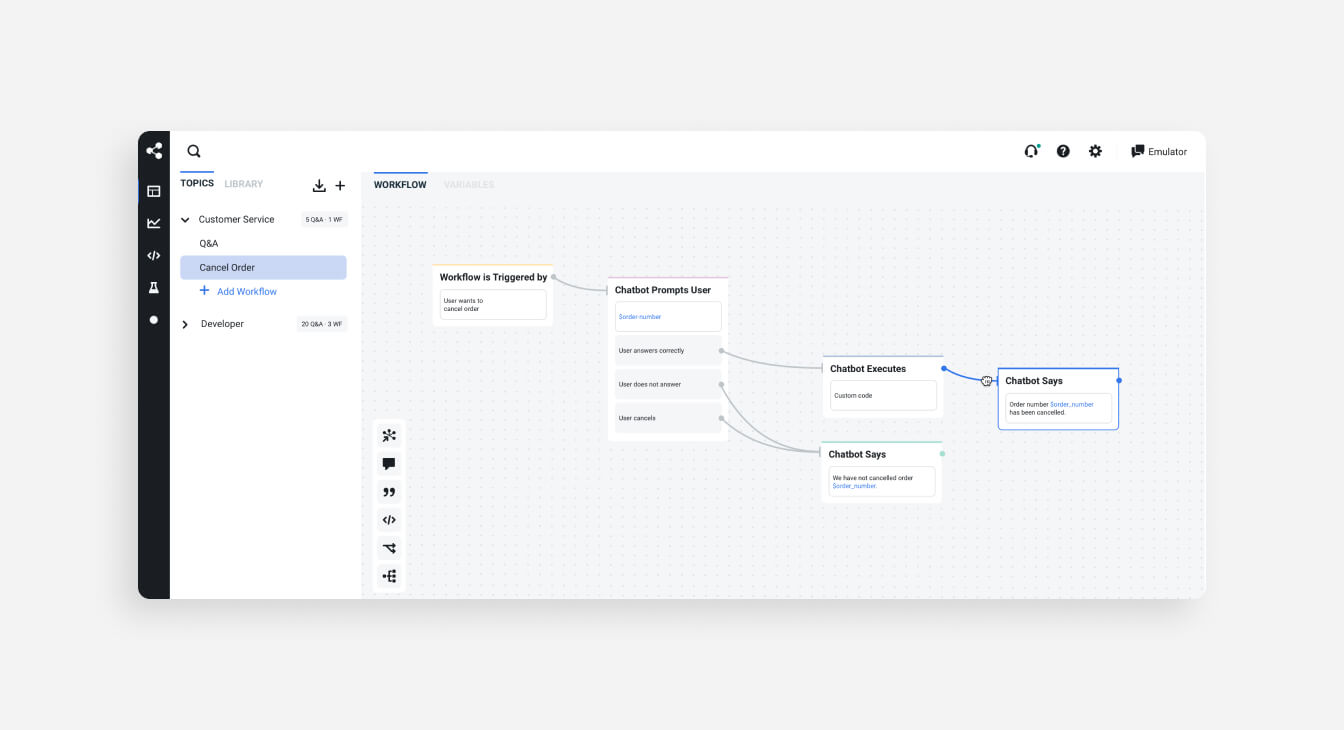
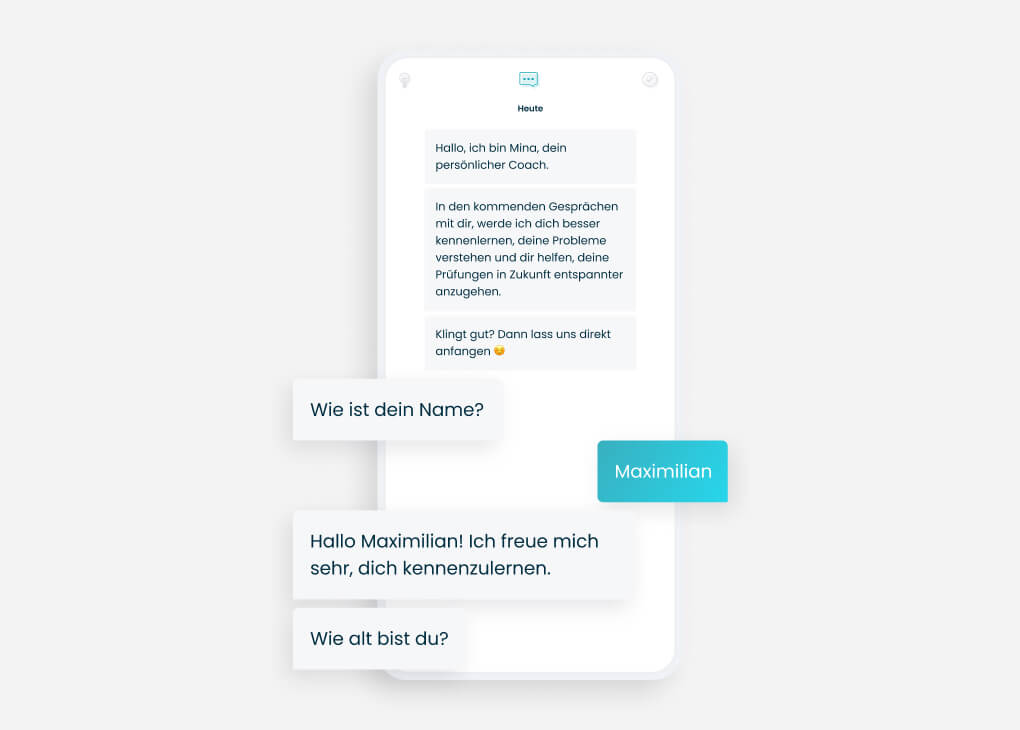
The interface for the conversational user experience CUX
Conversational User Experience is a collective term for chatbots, messenger bots, voicebots and assistants. The goal of good CUX is to make a human-computer interaction as close as possible to a human conversation through speech-based technology. Users should be able to engage in a dialogue with the computer as they would with a real person. Typical examples of conversational user interfaces are virtual assistants and chatbots.
The technical basis for CUX is provided by NLP (Natural Language Processing) and dialog management, among other things, in order to make conversations as natural and efficient as possible.
Which problems does the MinaBot solve?
- At pandemic times like COVID-19, fewer and fewer people are able to take advantage of local psychotherapy due to lockdowns, even though demand has increased significantly.
- 100 EUR per hour for private psychotherapy or individual coaching cannot be afforded by many people in the long run.
- Waiting weeks for a therapy place and long travel distances are often a problem. Weekly sessions are therefore very time-consuming.
- Discussing one's own problems in person with a strange therapist is still tainted with shame for many.
